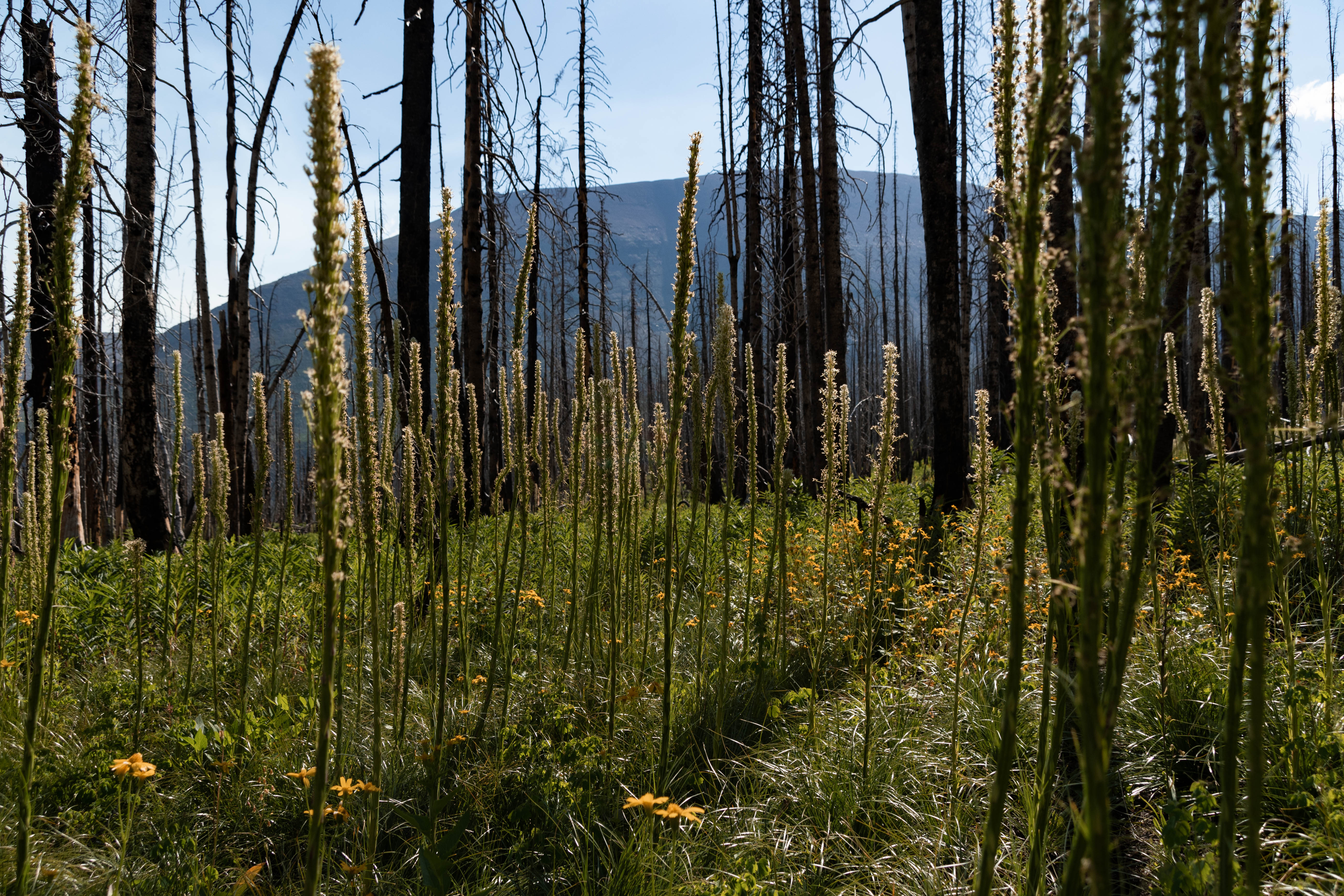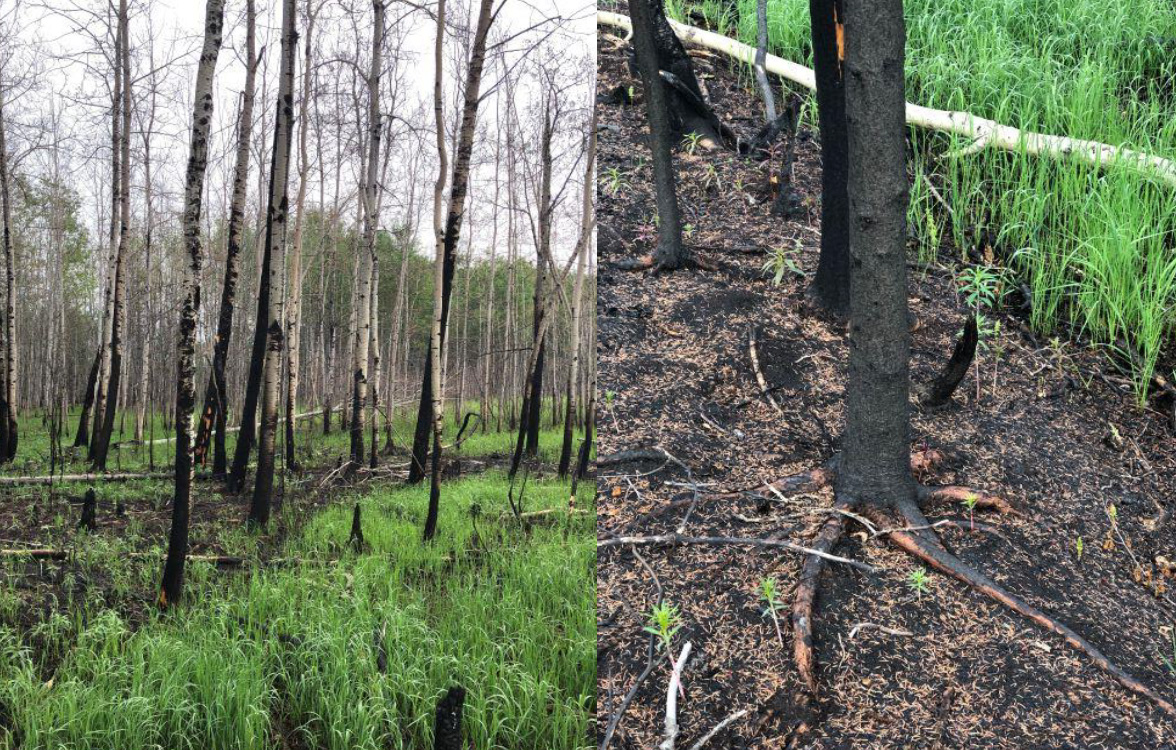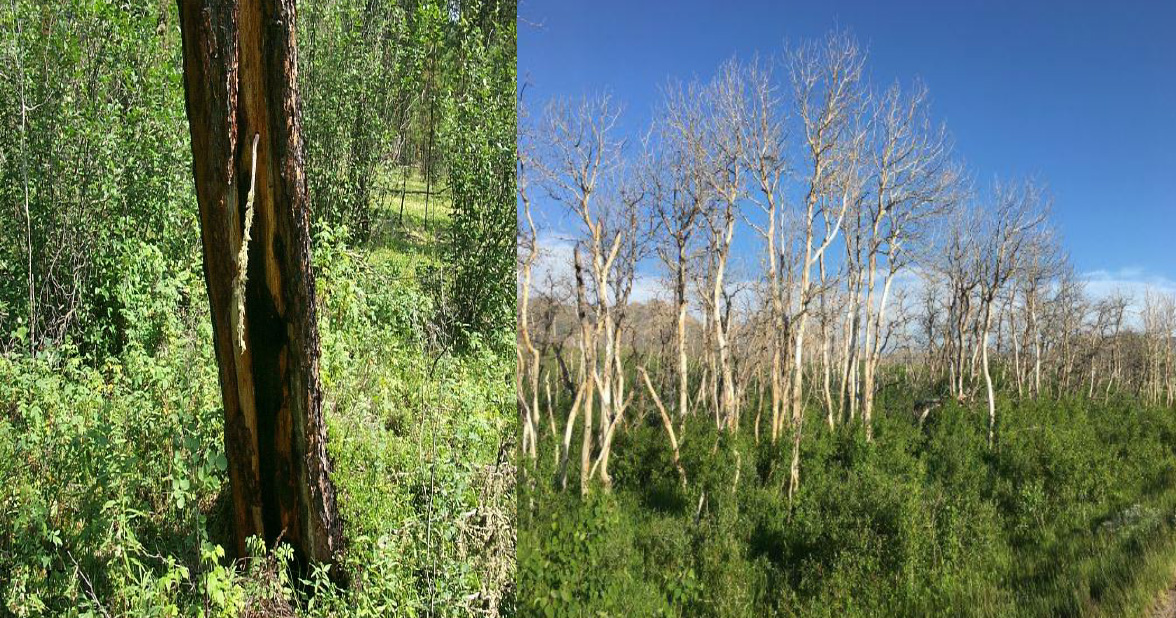Forest Regeneration after Fire - Toso Bozic

Forest fires are a natural part of many ecosystems, including the vast boreal forests of Canada. While they can be devastating and destructive, fire plays a crucial role in shaping these ecosystems by clearing vegetation, recycling nutrients, and promoting regeneration. Alberta private forests (woodlots) are resilient and adapted to survive and regenerate after fire events. Fire has been an integral part of Alberta forest ecosystems for millennia.
Climate change has emerged as a significant factor influencing the frequency and intensity of forest fires in the boreal region. Warmer temperatures, prolonged droughts, and increased pest infestations have contributed to more severe wildfires. In such cases, the traditional regeneration patterns may be altered, challenging the resilience of boreal ecosystems.
The Role of Fire in Forest Ecosystems
Alberta private forests(woodlots), provide not just significant economic and social values but also vital ecosystem services, including wildlife habitat, carbon storage, biodiversity support, and water regulation. One of the positive aspects of forest fires in the boreal region is the enrichment of soil nutrients. As the fire burns through the undergrowth and organic debris on the forest floor, nutrients are released back into the soil. This nutrient pulse provides essential resources for regenerating vegetation, allowing young seedlings to access nutrients and grow rapidly.
The other benefits of forest fire is the fire's ability to clear the forest floor of dense undergrowth and older trees reducing competition for resources like sunlight, water, and nutrients. This provides an opportunity for certain species to establish themselves in areas where they may have been previously suppressed.
Fire Adapted Tree Species
Tree species exhibit various adaptations that help them cope with, and respond to, fire events. Coniferous trees, such as jack pine, Lodgepole pine, and black spruce have serotinous cones that require the intense heat of fire to release their seeds. This adaptive trait ensures that new growth occurs quickly after fire, promoting the re-establishment of these species. Tree species such as white spruce and balsam fir don’t have special adaptation to fire, and it takes long time to establish these species after a fire has occured.
Deciduous species such trembling aspen, balsam poplars, paper birch, and willows exhibit vigorous resprouting abilities after fire. Their root systems remain intact, allowing for quick regeneration from underground buds and lateral roots.
Post-fire Regeneration Processes
The recovery rate and trajectory of the forest depend on several factors, including fire severity, soil fertility, and climate conditions. High-severity fires may lead to longer recovery periods, as they consume the organic layer and expose mineral soil. In contrast, low-severity fires may have less impact on the forest structure and a faster recovery time. Forest regeneration following fire is crucial for maintaining ecosystem health and resilience. It promotes the renewal of plant communities, which in turn provides habitats and resources for a diverse range of wildlife species. Post-fire regeneration also helps mitigate the spread of pests and diseases, reduces fuel loads, and aids in nutrient cycling. Following a wildfire, several key processes come into play to initiate and facilitate forest regeneration:
- Seeding and Germination - in boreal forests, many tree species depend on fires to disperse their seeds and trigger germination. The serotinous cones of species like black spruce and pines rely on the heat from fire to release seeds.
- Vegetative Regrowth - such as trembling aspen and balsam poplar are adapted to sprout new shoots from their roots after a fire event. These resprouting species can quickly establish new growth, even if their above-ground parts are damaged or destroyed by the fire.
- Colonization from Adjacent Areas - after a fire, neighboring unburned areas can serve as a source of seeds and plant material for colonization. Wind, water, and animals can transport seeds from unburned patches to the burned areas, facilitating the re-establishment of vegetation.
- Tree Planting – species such white spruce and balsam fir may not come back after fires and tree planting is the only option for establishment of these species.
Conclusion
As a destructive agent, a forest fire will damage homes, buildings, timber, wildlife, range, aesthetic beauty, and recreation resources. Intense fires can cause immediate and long-term damage to soil and watersheds.
Private forests (woodlots) in Alberta have evolved alongside fire, and many species have adapted remarkable strategies to survive and regenerate after fire events. By understanding the response of boreal species to fire and implementing adaptive management strategies, we can promote healthier, more resilient forests in the face of a changing climate. By promoting a better understanding of forest regeneration processes, we can ensure the long-term health and resilience of the Alberta private forest ecosystem in the face of changing fire regimes and other environmental challenges.


Contact Us
Saddle Hills
Junction of Hwy 49 & Secondary Hwy 725
RR1, Spirit River AB
T0H 3G0
T. 780-864-3760
Fax 780-864-3904
Toll-free 1-888-864-3760
frontdesk@saddlehills.ab.ca
Sign up to our Newsletter
Stay up to date on the Saddle Hills activities, events, programs and operations by subscribing to our eNewsletters.
